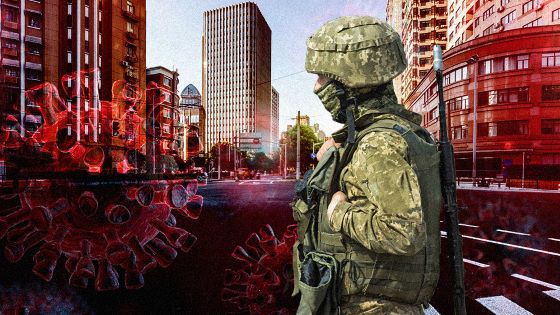Packing a Family Vehicle for Long-Term Bug-Out Living – Survivopedia


Step 1: Make Space Work for You
Let’s face it, your vehicle was not designed for survival living. That means every inch counts. Organization is everything. Do not toss your gear in the backseat and hope for the best. A packed vehicle needs to be balanced, accessible, and efficient.
Start with stackable bins or soft duffel bags. Separate them by category: food, shelter, clothing, tools, medical. Medium-sized bins work better than large ones. They fit under seats, stack well, and are easier to move. Keep heavier bins on the bottom and lighter ones on top. Fill every available gap. Stuff socks into shoes, stash small items in cookware, and roll clothing to conserve space.
Use built-in storage areas too. Seat-back organizers, door pockets, glove compartments, and the space under front seats can hold flashlights, chargers, maps, and small first aid kits. You want your most critical items easy to reach when you need them.
Make a habit of packing and repacking your vehicle during non-emergency times. Run a test load to make sure everything fits and is accessible. You do not want to be figuring this out with the clock ticking and adrenaline surging.
Choose multi-purpose gear. A tarp can work as a rain cover, tent footprint, emergency stretcher, or water collection device. A high-quality multitool replaces several bulky hand tools. Nesting cookware saves space, and a survival blanket can provide warmth or act as a makeshift shelter. When each item in your vehicle serves two or three purposes, you drastically cut down on unnecessary bulk.
>>For sharpening your outdoor skills, a guide like Spec Ops Bushcrafting can teach you advanced fieldcraft and self-reliance strategies.
External storage should be your last resort, not your first move. Roof racks, cargo boxes, and hitch carriers add space, but they affect fuel efficiency and handling. Use them only for lightweight or bulky items like sleeping pads or tents. Always secure gear properly and cover it with waterproof material. Do not pack items that block mirrors or restrict airflow. Safety comes first.
Step 2: Pack What Matters
The temptation to overpack is strong, especially when you are preparing for a worst-case scenario. But when space is limited, you need to pack smart. Focus on essentials that support your family’s basic survival: water, food, shelter, first aid, tools, and clothing. Everything else is optional.
Water should be your top priority. Plan for at least one to two gallons per person per day for drinking and hygiene. Use durable water containers that will not leak. If space allows, include several gallons of stored water. Add a gravity-fed water filter, water purification tablets, or a portable filter straw. Water weighs a lot, so do not overload your vehicle, but carry as much as you reasonably can. Remember, you cannot survive more than three days without it.
Food is next. You need calories, not gourmet meals. High-density, shelf-stable items like trail mix, peanut butter, jerky, and long shelf life canned survival meat are ideal. Dehydrated meals are good if you have a way to boil water. Avoid canned goods unless you have space, as they are heavier. Include a compact stove, small pot, basic utensils, and fuel. If you have kids, bring familiar snacks and morale boosters like candy or drink powder. In high-stress situations, small comforts go a long way.
>>For additional inspiration on preservation and pioneer food, consider adding The Lost Ways survival food guide to your prepper library.
Shelter is not just about tents. Your car might be where you sleep, but you still need options. Pack a tent or tarp system that is quick to set up and large enough for your family. Include sleeping bags or blankets, sleeping pads or foam mats, and weather-appropriate clothing. Layering is key: insulating layers, waterproof outer layers, and changes of socks and underwear. Do not overdo it on clothing. Two to three outfits per person are usually enough.
Your first aid kit should be comprehensive. Include trauma supplies, bandages, pain relievers, antiseptics, and any necessary prescription meds. Add child-specific items if needed, like fever reducers, antihistamines, or infant medication. Hygiene supplies are just as important. Bring soap, toothbrushes, toothpaste, wipes, feminine hygiene products, and hand sanitizer. Sanitation supplies like trash bags and a small shovel are helpful for managing waste.
>>A resource like Survival MD can also be invaluable, giving you step-by-step instructions when no professional care is available.
Tools are vital. At a minimum, pack a multitool, fixed-blade knife, flashlight or headlamp with extra batteries, duct tape, zip ties, and a basic vehicle repair kit. Make sure your car has a working jack, lug wrench, and spare tire. You should also bring jumper cables, motor oil, coolant, and an air pump or inflator. A hatchet or folding saw is useful for cutting wood or clearing a path. A fire-starting kit with lighters, matches, or ferro rods is also essential.
Do not rely solely on digital tools. Keep physical maps of your area and a reliable compass. If your phone dies or GPS fails, you still need to find your way. Pack a crank radio or battery-powered unit for weather updates. Carry emergency contacts, copies of ID, and medical info in a waterproof pouch.
Include personal and family comfort items. If you have young kids, do not forget diapers, formula, or favorite toys. A deck of cards, small games, or books can distract children during stressful periods. If you have pets, pack food, water, a leash, and basic pet care supplies. Everyone should have gloves, a mask, and protective eyewear. Disaster zones can be filled with dust, smoke, and debris.
>>For defensive tactics that go beyond basic home security, Guerrilla Home Defense is an excellent resource.
Step 3: Manage Fuel Like Your Life Depends on It
Without fuel, your bug-out vehicle is dead weight. You need to plan for fuel storage, conservation, and alternatives.
Always store extra fuel if you can do it safely. A couple of five-gallon gas cans can make the difference between escape and getting stranded. Use only approved fuel containers. Keep them sealed, upright, and out of direct sunlight. Use fuel stabilizers and rotate your stock every six months to a year.
Never let your gas tank fall below half, even in normal times. Make it a habit to top off regularly. In an emergency, half a tank plus your stored fuel may be all you have.
Drive conservatively to extend range. Stay under 60 miles per hour. Accelerate smoothly and avoid hard braking. Coast when possible. Do not idle for long periods. Avoid unnecessary stops and detours. Plan your route in advance and stick to back roads when safe. Traffic jams burn fuel you cannot spare.
Watch your weight. Extra gear means more fuel consumption. Remove anything that does not serve a direct survival purpose. Keep your load balanced to avoid unnecessary strain on the vehicle.
Prepare for the worst-case scenario where fuel is gone. Carry a siphon kit to pull fuel from other vehicles or small engines. If you have a diesel engine, you might be able to use heating oil or biodiesel in an emergency. Bring a solar charger or portable power bank to keep your electronics running without draining your vehicle battery. A folding bike or small cart can help if you are forced to move on foot.
Follow the fuel rule of thirds. One third to get to your destination. One third to get back. One third as a buffer. In reality, plan for more than you think you will need. If your safe zone is 200 miles away and your vehicle gets 15 miles per gallon, you will need about 13 gallons, so aim to carry at least 20 gallons to be safe.
Final Thoughts
Packing a family vehicle for long-term bug-out living is about making careful, calculated decisions that prioritize survival and mobility. Your car needs to function as a shelter, transport, and supply station. That means every item must earn its place.
Reassess your loadout regularly. Replace expired items. Adjust clothing for the season. Update your plan as your family’s needs change. Know what is packed, where it is, and how to get to it fast. For help managing and rotating your stockpile efficiently, The Stockpile Savior is a great reference.
Most of all, stay ready. Emergencies do not come with warnings. With the right gear, the right planning, and the right mindset, your vehicle can be the key to keeping your family alive when everything else falls apart.
>>Ready to build your own vehicle survival kit? Start by stocking essentials and expand your resilience.
Read the full article here









